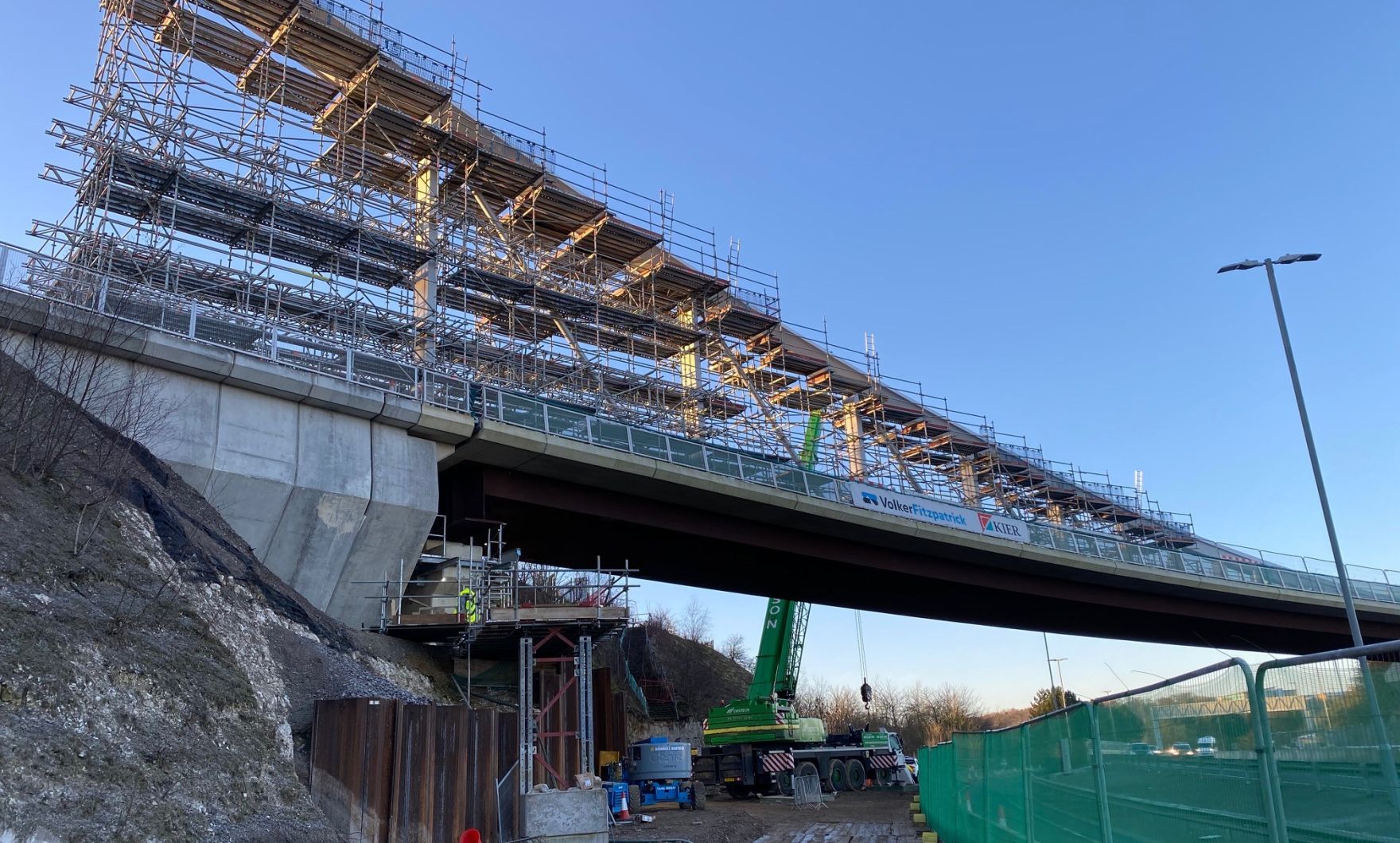Richter provide temporary works support on DART.
Published: 25/08/2021 16:27
The Luton Direct Air-Rail Transit (DART) is a driverless light rail system designed to link a new station at Luton Parkway on the Thameslink Main Line, to a new terminus in Luton Airport. The project is composed of seven main sections; a new station, at which passengers travel on the DART, a 310m long eight span viaduct adjacent to the existing rail line, a 72m span gateway bridge over the existing A1081 New Airport Way, a 750m stretch of running slab in cut and on fill running adjacent to the A1081, a 490m trough section with sheet piles supporting the ground either side and a final 345m ‘cut and cover’ tunnel section running into the new underground terminus.
The gateway bridge was constructed offline and moved down the road on a self-propelled modular transporter (SPMT). Once in position, temporary works were required to install the concrete cladding panels that created a shell around the east abutment. This abutment was half-way up a steep chalk slope, the bottom of which was retained with a sheet piled wall near the airport approach road. The individual cladding panels weighed upwards of 17tonnes and had a complex geometry, resulting in their centre of gravity being acutely eccentric. These cladding panels were to be installed beneath the bridge negating the possibility they could be directly lifted into position using a crane.
Richter designed temporary works, using proprietary products where possible, to enable the cladding panels to be rolled into position beneath the bridge on machine skates. Due to the complex geometry of the panels, cradles were designed again using proprietary products (Mabey Mass 50) onto which the cladding panels were fixed using concrete screwbolts. Richter determined the sequence of installation which was clearly shown on the design drawings. To install one of the panels, the TWC specified additional temporary works to enable its installation. In order to avoid these temporary works, Richter proposed a lifting sequence using tirfors to pull the panel into position beneath the bridge which was successfully implemented providing financial and programme savings.
All the temporary works were 3D modelled in-house which formed the basis of our 2D drawings, this process ensured there wasn’t a clash with the bridge or any existing temporary works.
